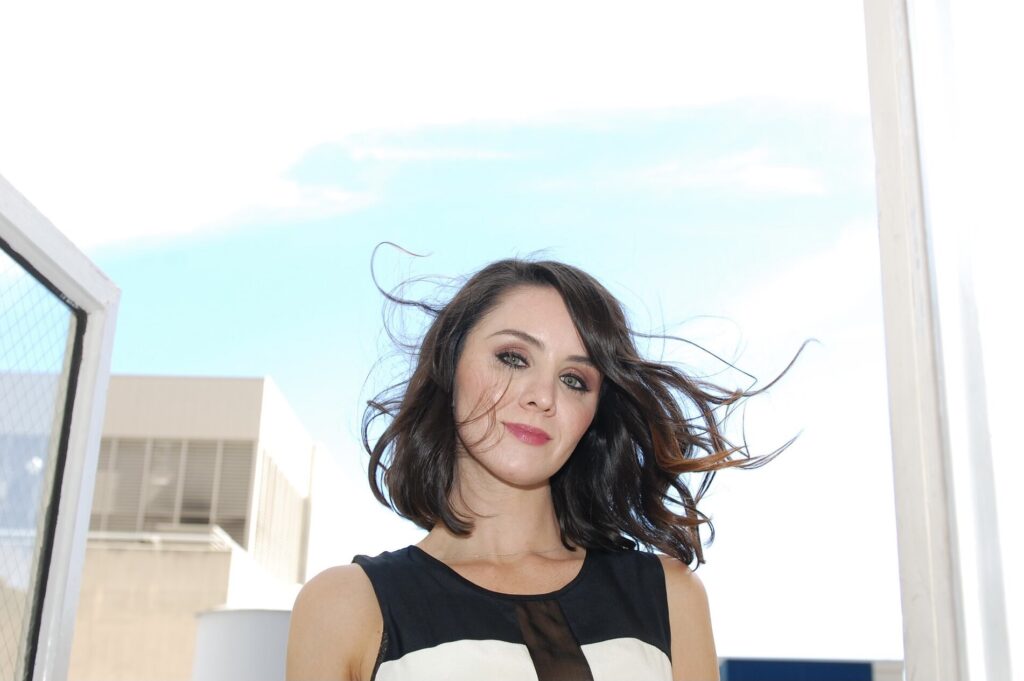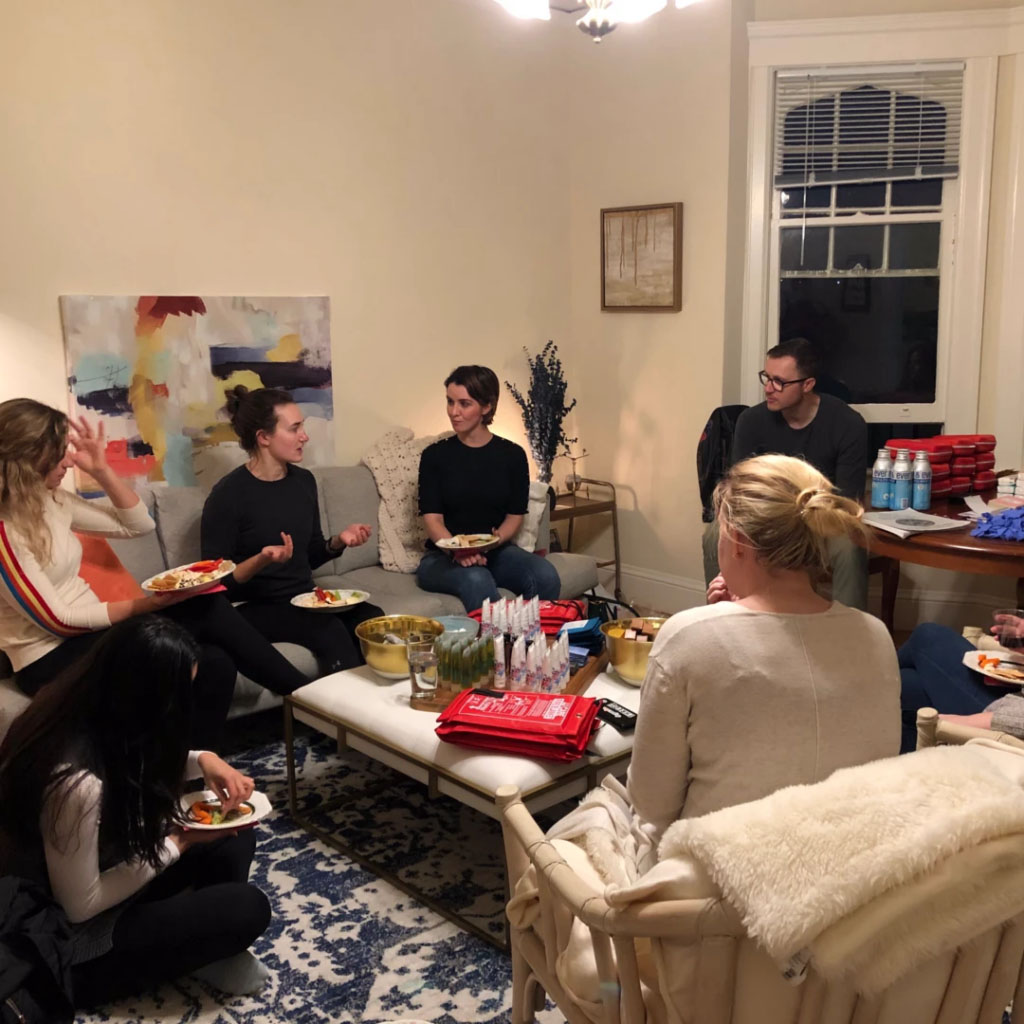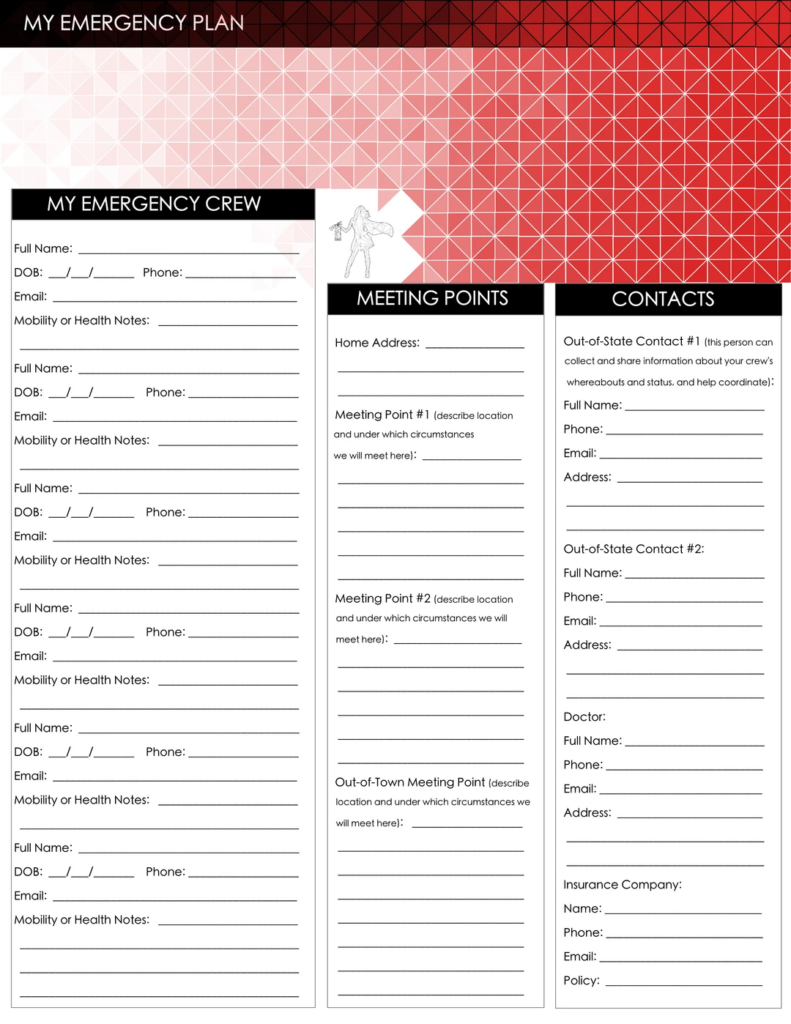By Emily Merrell
A few years ago we had an apartment fire. I had NO idea what to do and all instincts shut down. Heck, I didn’t even know how to use a fire extinguisher. When I met Kate Ellis-Hill, founder of The Disaster GaI, I was blown away by what she was creating. Her community of empowered and prepared individuals can handle and tackle disasters calmly, from fires to earthquakes. Learn about her amazing services and emergency kits to be more prepared for the unknown.

SDS: The Disaster Gal sounds like the ultimate superhero! Can you tell us about it and the idea behind creating the brand.
KEH: I created The Disaster Gal because I moved from Denver to San Francisco and was terrified by the idea of earthquakes – I had no idea what to do if The Big One hit, or even what to do if a Not-Very-Big One happened. I took an emergency response training course in my neighborhood and it changed everything. It made me feel so empowered and capable. I wanted to help share the knowledge I got there and continued building on over the next few years. I made a series of videos and written guides to help distill that information and make it more accessible.
On top of the education piece, I couldn’t find a good emergency kit. Everything out there was either prohibitively expensive, or such low quality that it didn’t seem truly useful. A good emergency kit should have well-made, easy-to-use contents and it should be customized. It should have a pair of your own sneakers, backup glasses and medications, non-perishable foods you actually like to eat, etc. I wanted to make a kit that the owner was excited to explore and to make her own. The kits also gave me the ability to source amazing products from some women-founded and social-good brands that I love.
SDS: As a newbie to SF, what were the biggest things that surprised you about safety preparedness?
KEH: Honestly, the fact that almost nobody I knew was prepared. Many friends and coworkers had lived in the Bay Area for years but didn’t have a kit or a reunification plan, didn’t know how to operate a fire extinguisher, didn’t know how to recognize and remedy the most common hazards in their homes, etc. A lot of people I spoke with found even the idea of preparing for an emergency to be too scary to think about, so they just didn’t.

SDS: For those that aren’t safety prepared, what are three things we can do right now to get moving?
KEH: First, identify the biggest risks in your area. Look around your home for anything that might be dangerous if that natural disaster happened: for example, if you live in an earthquake-prone spot, make sure that you don’t have a heavy shelf or painting right above your bed because it could fall on you while you’re sleeping.
Next, MAKE A PLAN. I made one on my website that you can download for free. Identify who is in your emergency crew (family, friends, neighbors, etc), who in that crew is responsible for what (picking up kids or pets, getting the emergency kit, etc), where your meeting points are and under what circumstances you go to them. Lastly, begin making your kit. Even getting a few critical items together is a great start.
SDS: What are your favorite safety resources? And what training or classes do you recommend taking?
KEH: FEMA has a national program called CERT which is a free, multi-week, in-person training that they run in collaboration with local fire departments. Covid has made a big impact on both the ability to offer courses and on their funding, but the website has some great resources. CPR and first aid are also so, so useful. I also have a handful of one-minute videos and written guides for anyone who wants to learn to be prepared in digestible increments.

SDS: When packing an emergency bag, what are some things to consider packing and where does one store it?
KEH: Go back to thinking about the biggest dangers that surround you. If it’s blizzards, you should keep warm clothes and shoes in a car kit. If it’s earthquakes, your kit needs to be by your bed and include a pair of tennis shoes: in case one happens in the middle of the night you could be in the dark and surrounded by broken glass. If it’s wildfires, you should think about copies of important documents and anything that you would need in case of evacuation.
All kits should have a few things in common, including: water, backups of any important medication (if possible), cash, keys, your emergency plan, a list of phone numbers, a portable power bank, a flashlight, a first aid kit, a whistle, a notebook and a marker.
SDS: Lastly, how can we find out more about the Disaster Gal and what can we expect next?
KEH: You can find my guides and kits at The Disaster Gal and on Instagram. I’m working on expanding my line of kits to fit different types of needs and circumstances (children, pets, office, car, etc), and adding more how-to guides. If there’s one you’d love to see, please reach out! You can find me at: kate@thedisastergal.com

